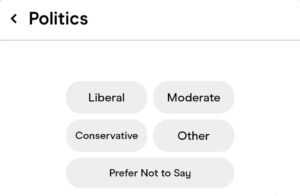by Nicole Faust
West
Fulton Market at midday is a bleak sight. The empty streets are lined
with industrial high-rises, lofts and warehouses. Though seemingly
desolate, the gritty West Loop has experienced cultural evolution in
recent years.
Historically home to Chicago’s meatpacking
district, the neighborhood also boasts a thriving arts and culture
scene. Galleries and upscale shops have moved in and brought the
“green” lifestyle with them. Amidst the maze of red-brick buildings is
Pivot, Chicago’s premier eco-boutique. 
Located at 1101 West Fulton Market, Pivot seems largely out of place, boxed in by loading docks, but owner Jessa Brinkmeyer feels she chose the right neighborhood. “I love the dynamic of the Fulton Market District,” she said, “it’s a mix of art, food and retail, yet the edginess still exists.”
While working as a fashion journalist in Chicago, Brinkmeyer discovered the emerging world of eco-fashion and its community of designers. “I wanted to support them and promote the industry's move toward more conscious consumption,” recalled Brinkmeyer. She accomplished her goal with the boutique, which opened in September of 2007.
When stocking her shop, Brinkmeyer chooses vendors and products that are “very classic with interesting twists or details, not trend-focused or ‘dated’.”
She also considers the materials and processes used by designers in creating their collections. Her motto: Fashion and sustainability can coexist.
Pivot’s interior merges modern with industrial—the gleaming maple floor and clean white walls set off by exposed brick at the back of the shop. Racks and displays are sparse and simple, allowing the garments and accessories to speak for themselves.
Such range of color, texture and sheen is often unexpected of clothing described as “eco-friendly,” but Pivot’s racks are lined with not only neutrals, but bright colors for spring.
Each piece is tagged with a note (occasionally hand-written) from Brinkmeyer explaining how it is “eco-smart.” For instance, garments like Lara Miller mini-dresses, made of bamboo fiber are smooth, breathable and renewable. Bamboo is one of the fastest growing plants in the world and requires no pesticides or chemicals to grow.
g=9.8 Lingerie by French designer Sophie Young is made out of Lenpur, a fiber made from pine pulp. Light and silky, this fabric is biodegradable.
Shoppers will also find pieces made of organic cottons, wools and silks and soy fiber. The boutique carries over 30 different designers, both domestic and foreign. Primary brands include Linda Loudermilk, ORGANIC and Del Forte Denim.
At Pivot “eco-smart” is not limited to natural fibers and materials. The array of jewelry and accessories are produced mostly from “recycled” vintage pieces and remnant material from factories’ manufacturing process. Handbags made from factory reject candy wrappers are among the popular items.
The shop also carries assorted housewares such as placemats and coasters made from 100% recycled rubber. Another standout is the “Juice Clock” by Normal Designs, made from recycled HDPE. (High Density Polyethylene Plastic)
Even the boutique’s display structures are eco-friendly. Local artist Joshua Height created custom pieces from reclaimed steel and wood to showcase the fashions.
The city-wide “green initiative” is not only making residents more active in environmental practices like recycling, but is contributing to the growing momentum in eco-friendly fashion.
“Most people don’t even want bags,” said employee Kate Zimmerman. She explained that customers often reuse old shopping bags to conserve the boutique’s resources.
Of in-store protocol she explained “all of our boxes are recycled, if not reused.” Pivot also keeps original packaging of garments and products and gives them to customers rather than using bags or tissue paper found at most boutiques.
A general issue with eco-friendly or locally-produced merchandise is the heightened expense. Of the cost of “living green” Brinkmeyer explained, “It's about creating value for pieces -perhaps they often last longer or mean more. Customers know they were produced ethically and so that carries a higher price-tag sometimes, but it's worth it to most people. “
Brinkmeyer’s personal goal is to allow customers to realize they don't need to trade style for a conscious wardrobe.
“I give consumers the story behind the products and the designers so they feel more connected to the pieces and know that I'm very invested in everything I carry,” said Brinkmeyer.
Categories:
Uncategorized






Be First to Comment